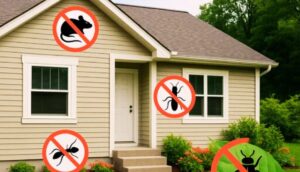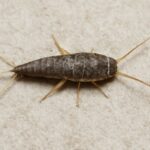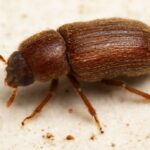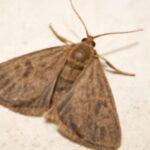Safety Measures that Work

When disaster strikes, hurricane shelters become a lifeline. They offer safety, shelter, and support during times of crisis. But with many people sharing the same space, there’s one tiny threat that can cause big problems: bed bugs.
These sneaky pests don’t care about the weather. In fact, they thrive in crowded conditions—especially in places like temporary shelters. But don’t worry! In this guide, we’ll walk you through easy, practical steps to prevent bed bugs in hurricane shelters. Whether you’re a shelter worker, evacuee, or volunteer, these tips can help keep everyone safe and bite-free.
Why Bed Bugs Are a Big Deal in Shelters
Bed bugs may be small, but they can create a storm of their own. They hide in bedding, clothes, bags, and furniture—only coming out at night to feed on human blood. A single pregnant female can cause an infestation in just a few weeks.
In hurricane shelters, where hundreds of people may sleep close together, the risk multiplies. If even one person unknowingly brings bed bugs in, they can spread fast. That’s why prevention is key.
Let’s dive into some simple strategies you can use.
1. Start With Clean Bedding and Sleeping Areas
One of the first lines of defense is keeping things clean. Before anyone arrives, shelter staff should:
-
Wash bedding in hot water.
-
Dry it on the highest heat setting.
-
Inspect mattresses, cots, and cushions for signs of bugs.
If possible, use vinyl or plastic covers for mattresses. These are easier to clean and make it harder for bed bugs to hide.
2. Encourage Personal Belongings to Stay Off Beds
Bed bugs often hitch a ride in bags, clothing, and luggage. To stop them from crawling into sleeping areas:
-
Ask evacuees to keep bags off beds.
-
Provide plastic bins or shelves for storage.
-
Offer large trash bags for people to wrap their belongings in.
This small step can make a huge difference.
3. Educate Shelter Residents and Volunteers
The more people know, the better the chance of preventing an outbreak. Post signs around the shelter with friendly, easy-to-read messages about:
-
What bed bugs look like.
-
How to check for them.
-
What to do if you spot one.
Consider holding short, casual info sessions for new arrivals. A little education can make a big difference.
4. Do Daily Inspections
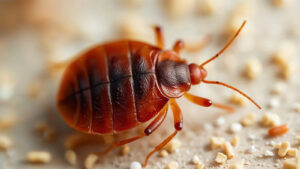
It’s smart to check sleeping areas every day, especially around:
-
Mattress seams
-
Cracks in furniture
-
The edges of bedding
Look for small brown stains, live bugs, or tiny white eggs. If anything suspicious pops up, act fast. Isolate the area, bag the bedding, and notify a pest control expert or shelter coordinator right away.
5. Limit Fabric in Sleeping Areas
Fabric gives bed bugs more places to hide. If you can, reduce the amount of:
-
Curtains
-
Upholstered furniture
-
Rugs
Instead, choose smooth, easy-to-clean surfaces like plastic chairs or vinyl cots. They not only deter pests but are quicker to disinfect during high turnover times.
6. Use Mattress Encasements
A zippered mattress encasement creates a protective barrier. It traps any existing bed bugs and prevents new ones from hiding inside. Look for encasements that are labeled “bed bug proof” and fit tightly without tearing.
7. Offer Clean Clothing or Laundry Options
During times of crisis or an emergency, people at times come in with limited clothing. If shelters can provide clean clothes or laundry services, it helps remove bugs that may be clinging to fabrics.

-
Set up a laundry rotation.
-
Provide high-heat dryers.
-
Give out clean T-shirts or socks when possible.
Even small laundry efforts make a big difference.
8. Avoid Used Furniture Donations
It’s tempting to accept used couches, cots, or chairs. But secondhand items can hide bed bugs. Unless furniture has been professionally cleaned or heat-treated, it’s better to say no.
When in doubt, go without.
9. Partner With Local Pest Control Experts
Pest control companies are often willing to help during disasters. They can:
-
Inspect shelters for free or at reduced cost.
-
Offer advice on treatment and prevention.
-
Train staff or volunteers in what to look for.
Build these partnerships ahead of hurricane season so you’re prepared when it matters most.
10. Respond Quickly to Reports
If someone reports bites or sees a bug, don’t ignore it. Quick action prevents a few bugs from turning into a full-blown infestation.
-
Move the person’s sleeping area.
-
Bag and label their belongings.
-
Disinfect the space.
-
Call in pest control.
Always act with compassion—no one wants to bring bed bugs into a shelter. The goal is safety, not blame.
FAQs: How to Prevent Bed Bugs in Hurricane Shelters
1. What are the signs of bed bugs in a shelter?
Look for tiny rust-colored stains on sheets, small oval bugs, shed skins, or itchy bite marks on the body. Also check mattress seams and furniture cracks.
2. Can bed bugs spread from person to person?
Bed bug don’t fly or jump, they are hitch hikers attaching themselves to and riding on bags, clothes and bedding. That’s why shared spaces are at greater risk for spreading.
3. How do I report bed bugs in a shelter?
Tell a shelter worker or coordinator immediately. They’ll know the proper steps to isolate the area and prevent the spread.
4. Can you get bed bugs from sitting in a chair?
Yes—especially if it’s fabric-covered and infested. Use plastic or vinyl chairs when possible to reduce hiding spots.
5. Do bed bugs carry diseases?
No, bed bugs don’t spread disease. But their bites can cause itching, stress, and sometimes allergic reactions.
6. What should I do with my clothes if I suspect bed bugs?
Place them in plastic bags and wash them in hot water. Dry on high heat for at least 30 minutes to kill bugs and eggs.
7. Are there natural ways to repel bed bugs?
Essential oils like tea tree or lavender may help deter them, but they’re not a reliable prevention method. Heat and cleanliness work best.
8. Should I throw away my mattress if I find bed bugs?
Not always. A zippered encasement can trap the bugs inside and make it safe to use again. Only discard if the infestation is severe.
9. Can shelters be sprayed for bed bugs?
Yes. Pest control pros can safely treat shelters with sprays or heat. Always follow safety guidelines when treating shared spaces.
10. Why do bed bugs love shelters?
Shelters provide warmth, people, and plenty of hiding spots—perfect conditions for bed bugs. That’s why prevention is so important.
In Case you missed it here are other articles on Controlling Pest During a Hurricane
- Termite Control After Flooding
- How To Keep Bugs And Rodents Out After A Hurricane
- Best Mosquito Control Options After Flooding
- How To Prepare Coastal Property For Hurricane
- Pest-Proofing Homes For Hurricanes/Floods
Final Thoughts: Prevention Is the Best Protection
Bed bugs may not be the first thing people think about during a hurricane, but they can quickly become a major problem in crowded shelters. The good news? With just a few smart steps, we can keep these pests at bay.
From daily inspections to education and clean habits, every action counts. When shelters stay clean and informed, everyone benefits—especially during times of stress and uncertainty.
By following these tips, you can help ensure that hurricane shelters remain safe, supportive, and bug-free spaces for those who need them most.
Need more tips on storm-season pest control? Be sure to check out our other helpful guides on keeping your home and shelter spaces pest-free—even after the worst weather.



